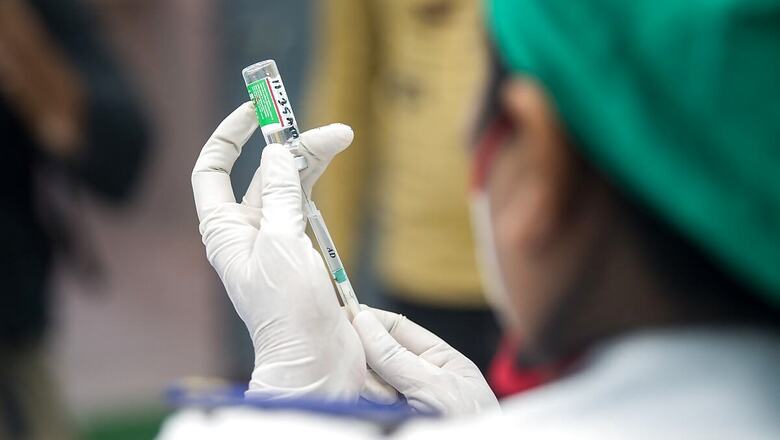
views
We understand the world around us through our sensory perceptions. As our perceptions are limited by our sensory organs and influenced by our past experiences, they are always biased and subjective. One way to remove this bias is to ask if our perception of a given phenomenon matches that of others or is our perception unique? Sometimes, even if all people perceive a phenomenon in the same way, reality could be very different. For example, we all see movement of the sun from east to west in relation to our position on earth. Science has provided unequivocal evidence that reality is just the opposite of what all 7 billion people on earth see every day. Given limitations of our sensory perception, how can one understand and fight a pandemic caused by a microscopic virus only based on perceptions, un-substantiated reports, and anecdotes? We can’t. The only way out is to adopt data-driven scientific methods to address the current crisis.
Collaboration and cooperation among scientists with diverse expertise from across the world is key to addressing this problem. Within days of the first report of a new influenza-like disease in Wuhan in China, scientists discovered that a virus (SARS-CoV-2) causes it, how the virus looks, the mechanism by which the virus enters human cells, how it causes the disease etc. Within months, vaccines were developed and now are being administered across the world.
The virus causing this pandemic is not an invisible enemy. We need an unbiased and a data-driven approach using state-of-the-art scientific methods to identify the virus and track its movement. This can happen only if scientists have access to complete epidemiological data, collected with sincerity and honesty. All public-health decisions must be evidence-based. Wherever data is to be collected empirically, must be done so systematically, with a statistical design. These unbiased and representative data must be shared publicly, so multiple types of analyses can be done by different groups to arrive at impactful conclusions. Data-sharing and analyses must be rapid in order to modulate public-health systems appropriately and in time to derive maximal benefit to the citizens of the country.
Government of India has put in place, right from the early days of the pandemic, a mechanism to collect epidemiological and clinical data and to capture this data from across the country into one centralized ICMR database. However, there is neither clarity nor transparency to suggest current strategies being adopted are based on firm evidence generated from our own country.
We emphasize generation of evidence from our own country because we are an ethnically diverse set of peoples. We all differ greatly at the levels of genetics, nutrition, and lifestyles. There is also a huge geoclimatic diversity. These diversities play very important roles in determining the nature and extent of spread and virulence of a given variant of SARS-CoV-2. Average levels of antibodies among individuals resulting from infection by the virus can significantly differ between populations because of intrinsic ethnic and exposure differences, as determined empirically for other infectious diseases. One size does not fit all! Both pharmaceutical and non-pharmaceutical interventions should be based on scientific analysis of local data. Even now, we do not know on what basis a specific treatment was advised or withdrawn, or reasons for frequent changes to vaccination policy etc. In the absence of data-driven rational policy, people would lose confidence in the system. We frequently read the news of innocent people relying on irrational methods of prevention and cure for Covid-19, which would only result in loss of more lives and livelihoods.
The general citizens are surprised and scared that so many variants of the coronavirus are arising regularly. Citizens need to be informed that there is nothing surprising about it. Every time genetic material is copied in cells of all organisms ranging from bacteria to humans, there will always be a few mistakes in the copying mechanism leading to generation of new variants. It is a natural phenomenon. In fact, without these variations there would not have been life on earth continuously adapting to changing environments.
SARS-CoV-2 is an RNA virus. Chemically, copying of RNA will result in more variations (compared to DNA). Not all of them will survive. Only those which can enter human cells and make copies of themselves will get selected and spread in the population. The greater the spread of the SARS-CoV-2, the more likely it is for new variants to appear. Depending on the immunological status of the population, some variants spread more, and some spread less. This is part of the natural process of evolution.
Some Covid-19 variants have been spreading more rapidly. It is yet unclear whether these variants are more virulent; that is, capable of causing more severe clinical disease (or more deaths) in a larger fraction of infected individuals. The transmission of a new variant can be curtailed, and the chain of transmission broken by implementing appropriate strictures. But decisions to implement strictures must be evidence-based. For this, we need to carry out more testing and viral sequencing, using a dense grid of sentinel sites at the pan-India level. Whenever a new variant is detected, the nearest sentinel site can carry out testing and viral sequencing in larger numbers in the local region to ascertain the rate of spread of the new variant. If the spread it rapid, a local lockdown – with enhanced local support to minimize suffering – can be implemented to break the chain of transmission of the new variant. In other words, there are scientific ways to take decisions, for which data collection and analysis must be planned and rapidly implemented.
Prioritization in vaccination must also be evidence-based; efficacy of a vaccine may not be the same across all age-groups, professions, exposures or ethnicity. But it is unclear whether systematic data are being collected from our citizens and whether these data are being used to drive vaccine rollout. When the vaccines were rolled out initially, the second dose was after one month, later it was changed to two months and now it is after 3 months. Were these changes based on the data empirically generated for Indian populations? If so where was the study done and what was the size of the cohort? Without such studies and communicating the rationale transparently to the public, we would only add to the confusion. There is also uncertainty about how long the immunity resulting from vaccination may last. Vaccine recipients must be followed up and their antibody levels tested at different periods of time after vaccination. It is unclear whether such follow-up data are being systematically collected.
There is a great uncertainty about whether the current vaccines would work against the new variants of the coronavirus. To ascertain this, the antibody levels in a cohort of vaccine recipients, who are infected with one or the other variant, must be measured over a period after vaccination. One can also carry out virus protection tests in laboratories using the sera from vaccinated individuals. Such data also need to be collected from vaccine recipients across ethnicities and geographies. Collection and analysis of such data need to be scientifically planned and implemented.
The Government must engage with larger numbers of scientists with relevant credentials to carry out the tasks of systematic and rapid data collection, data sharing and data analysis so that the future public-health strategies are firmly based on unbiased evidence. This necessitates trusting scientists and giving them the freedom to design studies and share the data freely. As most research labs in India are funded by the government and many studies need approvals from different government agencies, it is important that ICMR, DBT etc. are proactive in facilitating scientists to carry out such studies.
Finally, we should internationalize research on Covid-19 by freely exchanging data. After all, we are fighting a global pandemic. This virus entered a globally connected India and is spreading across our populations. New variants from India may go out to other countries. We export and import drugs and vaccines. All humanity is one in fighting the pandemic and international collaborations among scientists should be actively encouraged and supported.
Read all the Latest News, Breaking News and Coronavirus News here. Follow us on Facebook, Twitter and Telegram.














Comments
0 comment